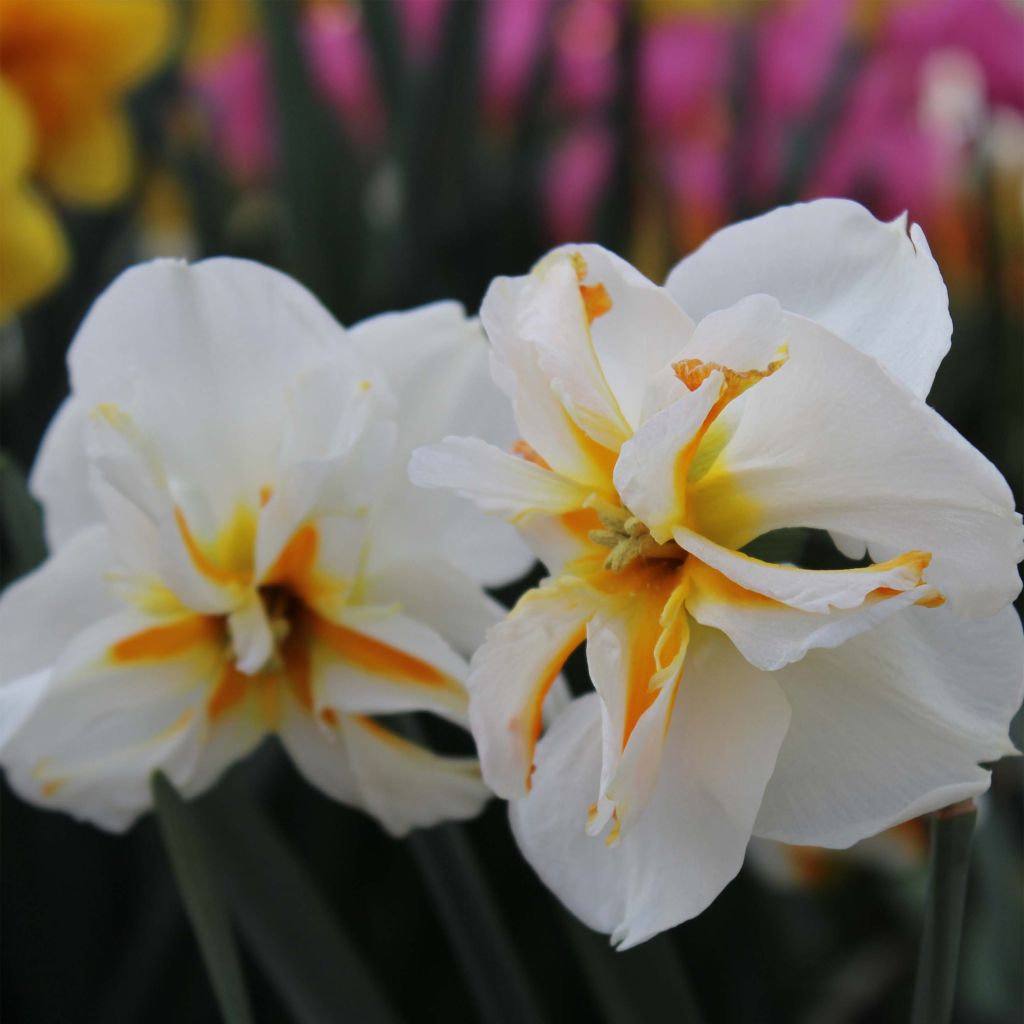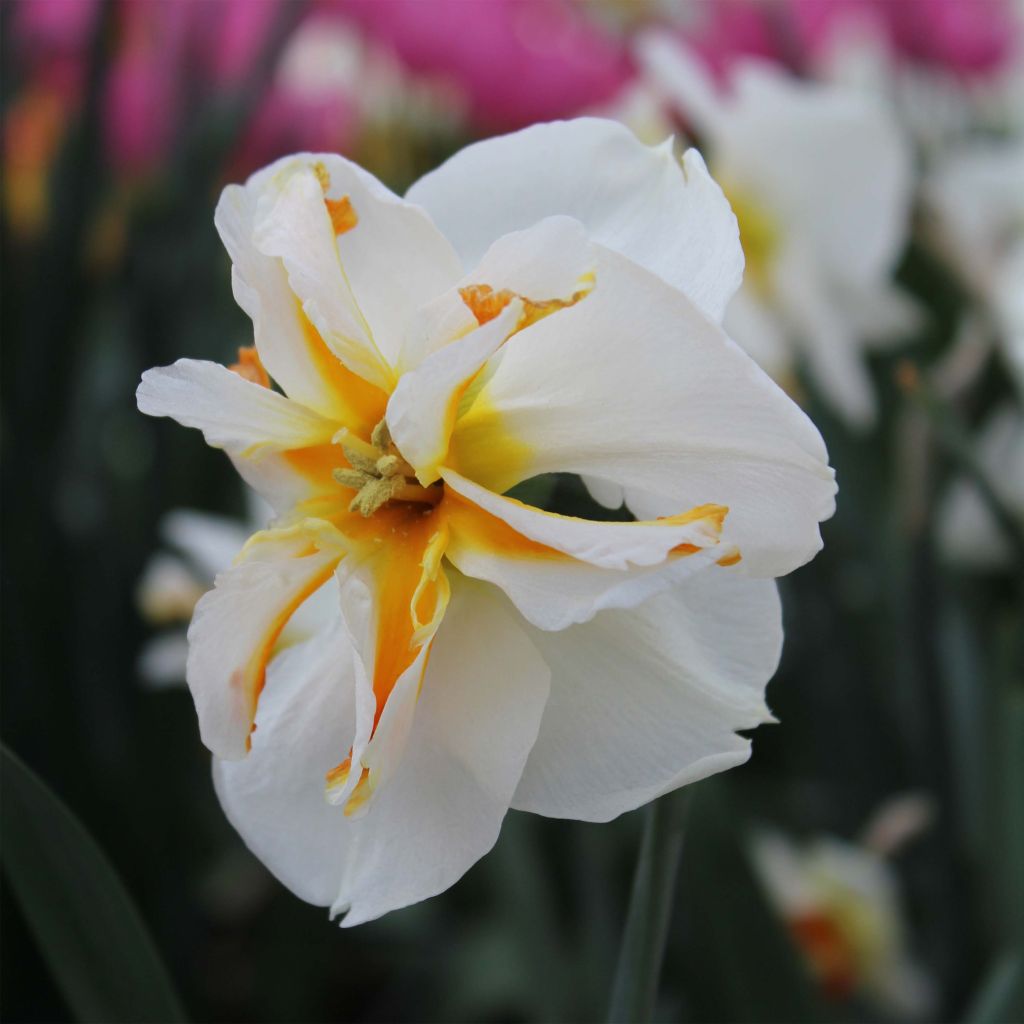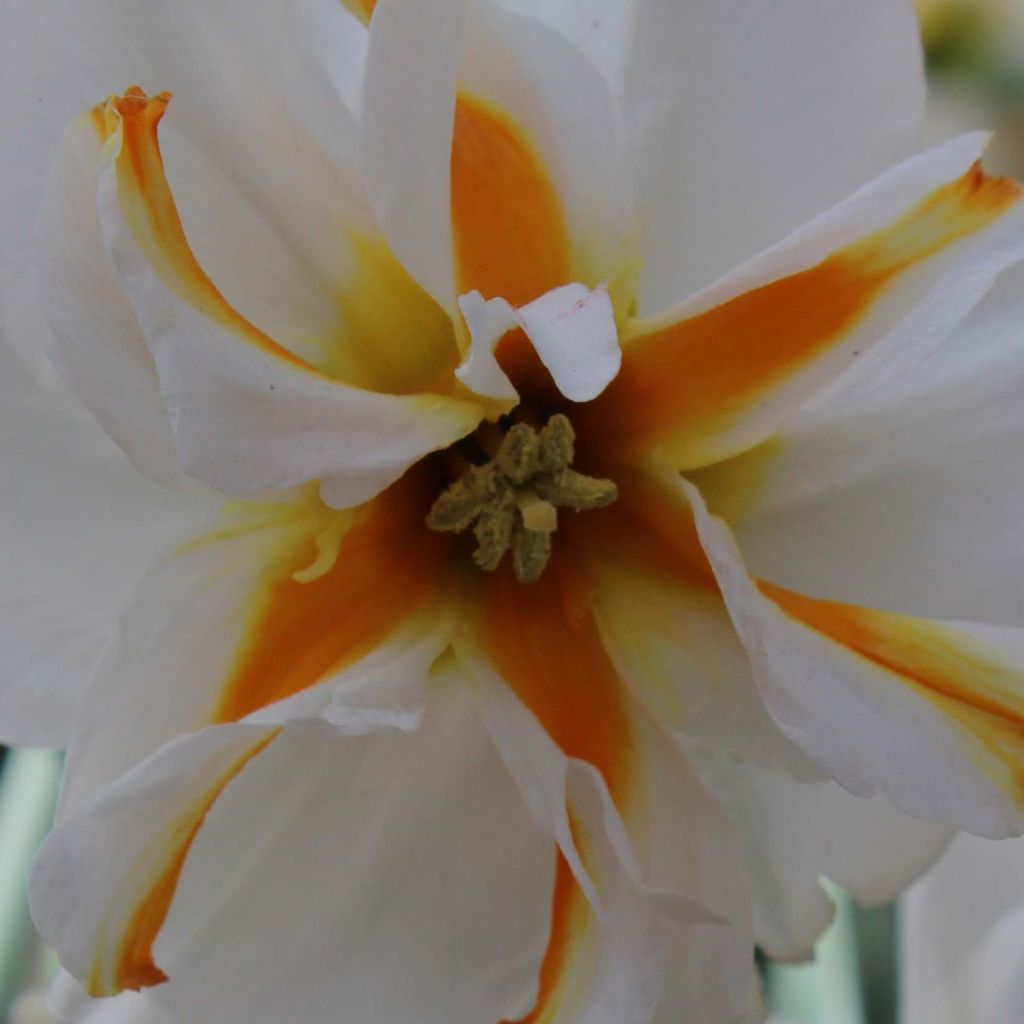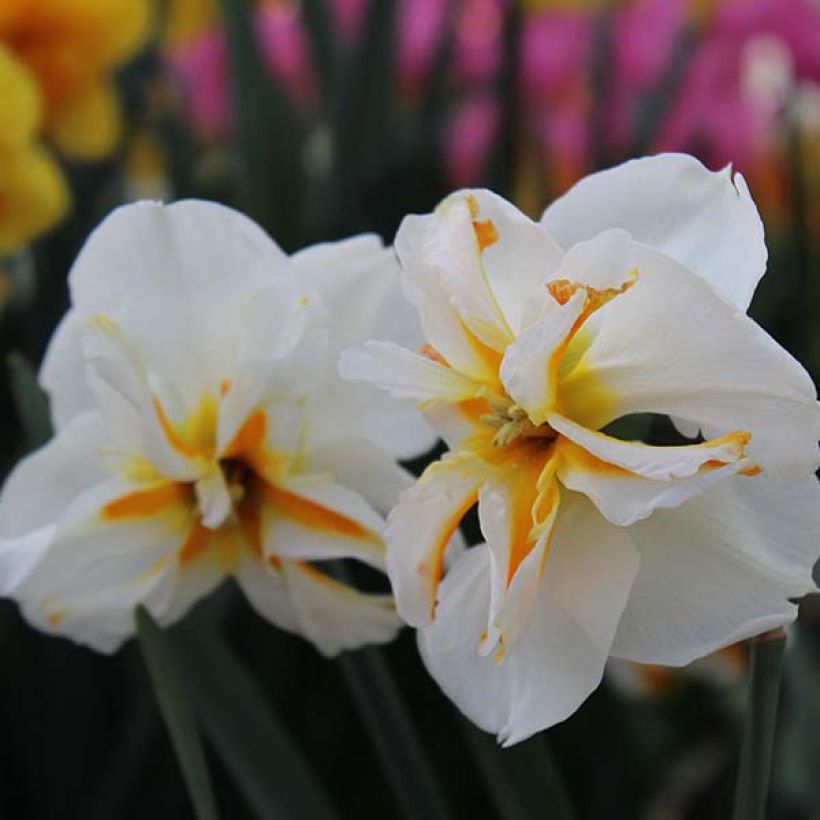Shipping country and language
Your country of residence may be:
Your country of residence is:
For a better user experience on our website, you can select:
Your shipping country:
-
Andorra
-
Austria
-
Belgium
-
Bulgaria
-
Canada
-
Chile
-
Croatia
-
Cyprus
-
Czechia
-
Denmark
-
Estonia
-
Finland
-
France
-
Germany
-
Greece
-
Hungary
-
Iceland
-
Ireland
-
Italy
-
Latvia
-
Lithuania
-
Luxembourg
-
Malta
-
Monaco
-
Netherlands
-
Poland
-
Portugal
-
Romania
-
Slovakia
-
Slovenia
-
Spain
-
Sweden
-
Switzerland
-
United Kingdom
We only deliver seed and bulb products to your country. If you add other products to your basket, they cannot be shipped.
Language:
-
French
-
German
-
Spanish
-
English
-
Italian
My Account
Hello
My wish lists
Log in / Register
Existing customer?
New customer?
Create an account to track your orders, access our customer service and, if you wish, make the most of our upcoming offers.


Narcisse Trepolo


Narcisse Trepolo


Narcisse Trepolo
Narcissus Trepolo
Narcissus Trepolo
Daffodil, Narcissus, Jonquil
EXQUISITE
Francoise B., 26/05/2018
Order in the next for dispatch today!
Dispatch by letter from €3.90.
Delivery charge from €5.90 Oversize package delivery charge from €6.90.
More information
This item is not available in your country.
Schedule delivery date,
and select date in basket
This plant carries a 6 months recovery warranty
More information
We guarantee the quality of our plants for a full growing cycle, and will replace at our expense any plant that fails to recover under normal climatic and planting conditions.
From €5.90 for pickup delivery and €6.90 for home delivery
Express home delivery from €8.90.

Does this plant fit my garden?
Set up your Plantfit profile →
Description
Narcissus Trepolo, also known as the Trepolo Orchid-flowered or butterfly Narcissus, is one of the brightest, with its cream corolla flamed with orange at the centre. This variety displays a medium-sized flower with finely cut floral segments, adorned with a very open, split and flattened crown, at the top of a sturdy stem. It flowers in March-April, at the same time as hyacinths and early tulips. It is slightly fragrant, a remarkable cut flower and an easy-to-grow, hardy plant that settles well in the garden.
'Trepolo' Narcissus belongs to the lily family (Amaryllidaceae), more precisely to division 11 of the large narcissus family, which has 12 divisions. The Narcissus genus includes about 50 species mainly found in Western Mediterranean, but also in Africa and Asia. The 'Tripolo' narcissus is vigorous and prolific. It reaches about 30 cm (12in) high for the foliage, 40 cm (16in) when in bloom. Its bicoloured flowers consist of a corolla of creamy white petals onto which is inserted a flat, split crown of bright orange and white. They are remarkably architectural. It is an early flowering plant, in March-April, whose yellow-green flower buds give way to pretty slightly fragrant flowers. Split corona narcissus have a corona of petals split for at least one-third of their length, with the edges turned back towards the petals and slightly fringed. The flowers have six petaloid tepals and six stamens inserted into a cup-shaped crown. The deciduous, linear foliage disappears in summer. This variety multiplies easily by producing bulblets.
'Trepolo' Split Corona Narcissus is undemanding and grows in any well-drained and loosened soil, but results are not as good in very wet or acidic soils. There is such a choice of varieties among narcissus that you can enjoy them for three months in spring without ever getting bored. They can all naturalize easily, love yellow and white, and often emit sweet scents. So many reasons to grow them in large groups (at least 20 bulbs) for a mass effect. Grow 'Trepolo' narcissus in natural-looking beds with scilla and hyacinths, accompany them with early tulips, forget-me-nots, pansies, or liverworts. A bunch of 'Trepolo' narcissus will be sensational in a vase. This narcissus is also perfect in pots.
Daffodils are narcissus, they belong to division 7 of the group. Native to Southern Europe and North Africa, they have flowers grouped in pairs or more. Botanical species have kept the charms of wild plants and thrive in rockeries: N.bulbocodium, N. canaliculatus, N.juncifolius, N.pseudonarcissus and the simple wood jonquil are among the prettiest. In vases, we advise you not to mix narcissus with other flowers such as tulips, as the stems of narcissus contain a substance that quickly wilts other flowers. This harmful effect on other flower types can be reduced by dipping the ends of narcissus stems in warm water for 1 to 2 minutes.
Report an error about the product description
Narcissus Trepolo in pictures


Plant habit
Flowering
Foliage
Botanical data
Narcissus
Trepolo
Amaryllidaceae
Daffodil, Narcissus, Jonquil
Cultivar or hybrid
Planting and care
'Trepolo' is undemanding and grows in any well-drained and loosened soil, but the results are less favourable in very wet or acidic soils. The warmer and drier your climate, the less difficult the soil conditions will be. Plant the bulbs from September to mid-December, 15 cm (6in) deep and 8 cm (3in) apart in a sunny or semi-shaded location (at least 3 hours of sunlight per day). Left undisturbed, your daffodils will produce more and more flowers each year. It is a good idea to water in dry spells. The daffodil bulbs can remain in the ground. Remove faded flowers to promote the accumulation of new reserves in the bulb, but let the foliage die naturally and only cut it when it turns yellow. If the clumps become too dense, they will flower less well, so they can be divided from July to September when the leaves are dry. You can replant the bulbs (if undamaged) immediately.
Planting period
Intended location
Care
-
, onOrder confirmed
Reply from on Promesse de fleurs
Haven't found what you were looking for?
Hardiness is the lowest winter temperature a plant can endure without suffering serious damage or even dying. However, hardiness is affected by location (a sheltered area, such as a patio), protection (winter cover) and soil type (hardiness is improved by well-drained soil).

Photo Sharing Terms & Conditions
In order to encourage gardeners to interact and share their experiences, Promesse de fleurs offers various media enabling content to be uploaded onto its Site - in particular via the ‘Photo sharing’ module.
The User agrees to refrain from:
- Posting any content that is illegal, prejudicial, insulting, racist, inciteful to hatred, revisionist, contrary to public decency, that infringes on privacy or on the privacy rights of third parties, in particular the publicity rights of persons and goods, intellectual property rights, or the right to privacy.
- Submitting content on behalf of a third party;
- Impersonate the identity of a third party and/or publish any personal information about a third party;
In general, the User undertakes to refrain from any unethical behaviour.
All Content (in particular text, comments, files, images, photos, videos, creative works, etc.), which may be subject to property or intellectual property rights, image or other private rights, shall remain the property of the User, subject to the limited rights granted by the terms of the licence granted by Promesse de fleurs as stated below. Users are at liberty to publish or not to publish such Content on the Site, notably via the ‘Photo Sharing’ facility, and accept that this Content shall be made public and freely accessible, notably on the Internet.
Users further acknowledge, undertake to have ,and guarantee that they hold all necessary rights and permissions to publish such material on the Site, in particular with regard to the legislation in force pertaining to any privacy, property, intellectual property, image, or contractual rights, or rights of any other nature. By publishing such Content on the Site, Users acknowledge accepting full liability as publishers of the Content within the meaning of the law, and grant Promesse de fleurs, free of charge, an inclusive, worldwide licence for the said Content for the entire duration of its publication, including all reproduction, representation, up/downloading, displaying, performing, transmission, and storage rights.
Users also grant permission for their name to be linked to the Content and accept that this link may not always be made available.
By engaging in posting material, Users consent to their Content becoming automatically accessible on the Internet, in particular on other sites and/or blogs and/or web pages of the Promesse de fleurs site, including in particular social pages and the Promesse de fleurs catalogue.
Users may secure the removal of entrusted content free of charge by issuing a simple request via our contact form.
The flowering period indicated on our website applies to countries and regions located in USDA zone 8 (France, the United Kingdom, Ireland, the Netherlands, etc.)
It will vary according to where you live:
- In zones 9 to 10 (Italy, Spain, Greece, etc.), flowering will occur about 2 to 4 weeks earlier.
- In zones 6 to 7 (Germany, Poland, Slovenia, and lower mountainous regions), flowering will be delayed by 2 to 3 weeks.
- In zone 5 (Central Europe, Scandinavia), blooming will be delayed by 3 to 5 weeks.
In temperate climates, pruning of spring-flowering shrubs (forsythia, spireas, etc.) should be done just after flowering.
Pruning of summer-flowering shrubs (Indian Lilac, Perovskia, etc.) can be done in winter or spring.
In cold regions as well as with frost-sensitive plants, avoid pruning too early when severe frosts may still occur.
The planting period indicated on our website applies to countries and regions located in USDA zone 8 (France, United Kingdom, Ireland, Netherlands).
It will vary according to where you live:
- In Mediterranean zones (Marseille, Madrid, Milan, etc.), autumn and winter are the best planting periods.
- In continental zones (Strasbourg, Munich, Vienna, etc.), delay planting by 2 to 3 weeks in spring and bring it forward by 2 to 4 weeks in autumn.
- In mountainous regions (the Alps, Pyrenees, Carpathians, etc.), it is best to plant in late spring (May-June) or late summer (August-September).
The harvesting period indicated on our website applies to countries and regions in USDA zone 8 (France, England, Ireland, the Netherlands).
In colder areas (Scandinavia, Poland, Austria...) fruit and vegetable harvests are likely to be delayed by 3-4 weeks.
In warmer areas (Italy, Spain, Greece, etc.), harvesting will probably take place earlier, depending on weather conditions.
The sowing periods indicated on our website apply to countries and regions within USDA Zone 8 (France, UK, Ireland, Netherlands).
In colder areas (Scandinavia, Poland, Austria...), delay any outdoor sowing by 3-4 weeks, or sow under glass.
In warmer climes (Italy, Spain, Greece, etc.), bring outdoor sowing forward by a few weeks.